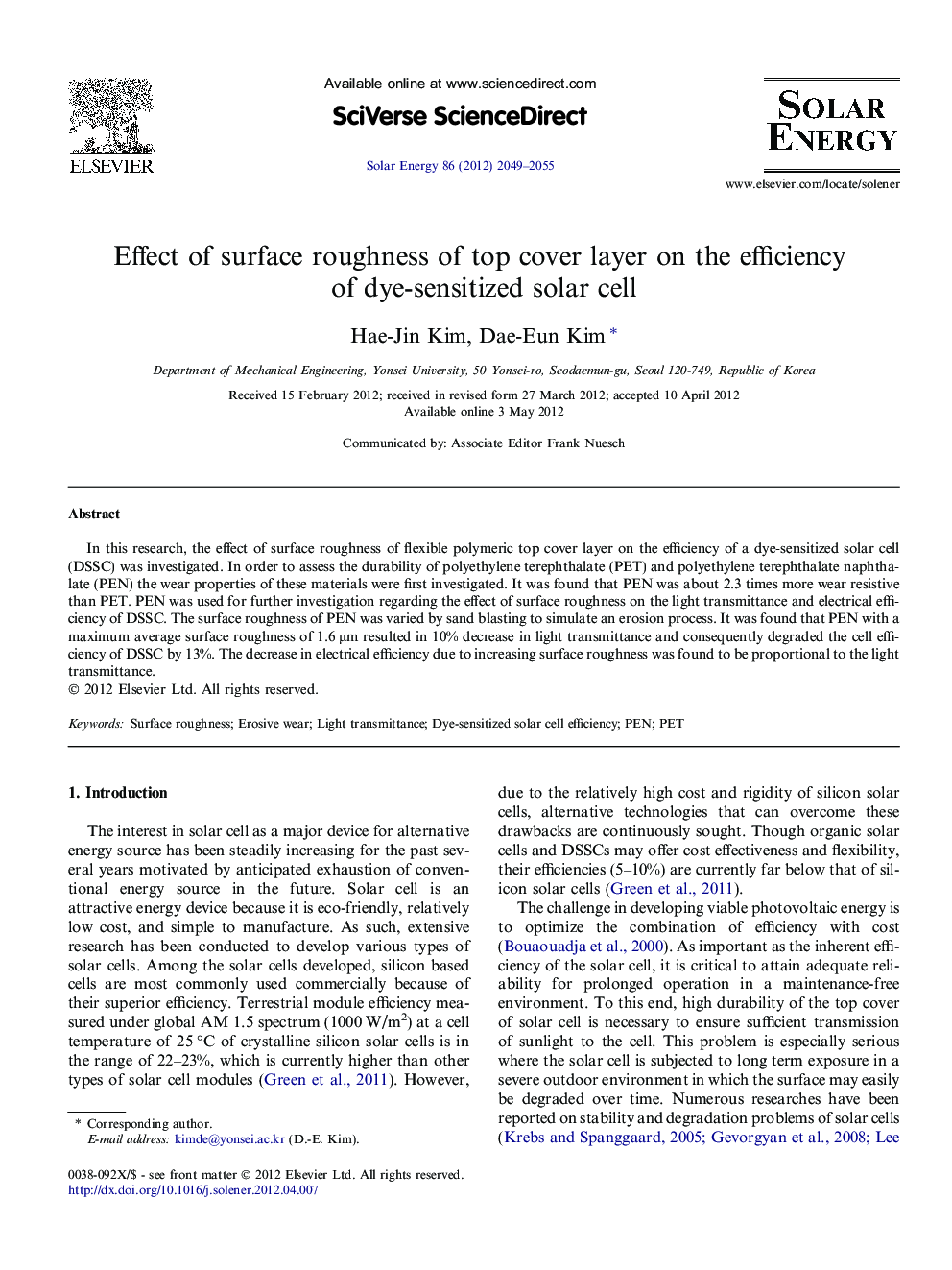| کد مقاله | کد نشریه | سال انتشار | مقاله انگلیسی | نسخه تمام متن |
|---|---|---|---|---|
| 1550730 | 998106 | 2012 | 7 صفحه PDF | دانلود رایگان |

In this research, the effect of surface roughness of flexible polymeric top cover layer on the efficiency of a dye-sensitized solar cell (DSSC) was investigated. In order to assess the durability of polyethylene terephthalate (PET) and polyethylene terephthalate naphthalate (PEN) the wear properties of these materials were first investigated. It was found that PEN was about 2.3 times more wear resistive than PET. PEN was used for further investigation regarding the effect of surface roughness on the light transmittance and electrical efficiency of DSSC. The surface roughness of PEN was varied by sand blasting to simulate an erosion process. It was found that PEN with a maximum average surface roughness of 1.6 μm resulted in 10% decrease in light transmittance and consequently degraded the cell efficiency of DSSC by 13%. The decrease in electrical efficiency due to increasing surface roughness was found to be proportional to the light transmittance.
► Effect of surface roughness of top cover layer on the efficiency of DSSC was examined.
► PEN was experimentally found to be more wear-resistive than PET.
► Light transmittance of PEN decreased exponentially with increasing surface roughness.
► Efficiency of DSSC decreased exponentially with increasing surface roughness.
► Strong correlation between light transmittance and efficiency of DSSC was found.
Journal: Solar Energy - Volume 86, Issue 7, July 2012, Pages 2049–2055